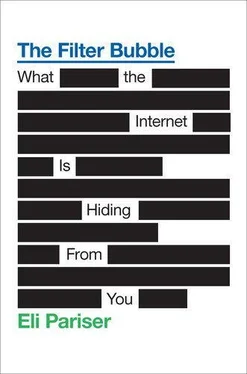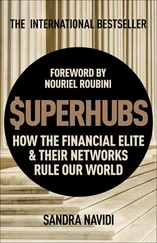Professor Ron Inglehart calls this trend postmaterialism, and it’s a result of the basic premise, he writes, that “you place the greatest subjective value on the things in short supply.” In surveys spanning forty years and eighty countries, people who were raised in affluence—who never had to worry about their physical survival—behaved in ways strikingly different from those of their hungry parents. “We can even specify,” Inglehart writes in Modernization and Postmodernization, “with far better than random success, what issues are likely to be most salient in the politics of the respective types of societies.”
While there are still significant differences from country to country, postmaterialists share some important traits. They’re less reverent about authority and traditional institutions—the appeal of authoritarian strongmen appears to be connected to a basic fear for survival. They’re more tolerant of difference: One especially striking chart shows a strong correlation between level of life satisfaction and comfort with living next door to someone who’s gay. And while earlier generations emphasize financial achievement and order, postmaterialists value self-expression and “being yourself.”
Somewhat confusingly, postmaterialism doesn’t mean anticonsumption. Actually, the phenomenon is at the bedrock of our current consumer culture: Whereas we once bought things because we needed them to survive, now we mostly buy things as a means of self-expression. And the same dynamics hold for political leadership: Increasingly, voters evaluate candidates on whether they represent an aspirational version of themselves.
The result is what marketers call brand fragmentation. When brands were primarily about validating the quality of a product—“Dove soap is pure and made of the best ingredients”—advertisements focused more on the basic value proposition. But when brands became vehicles for expressing identity, they needed to speak more intimately to different groups of people with divergent identities they wanted express. And as a result, they started to splinter. Which is why what’s happened to Pabst Blue Ribbon beer is a good way of understanding the challenges faced by Barack Obama.
In the early 2000s, Pabst was struggling financially. It had maxed out among the white rural population that formed the core of its customer base, and it was selling less than 1 million barrels of beer a year, down from 20 million in 1970. If Pabst wanted to sell more beer, it had to look elsewhere, and Neal Stewart, a midlevel marketing manager, did. Stewart went to Postland, Oregon, where Pabst numbers were surprisingly strong and an ironic nostalgia for white working-class culture (remember trucker hats?) was widespread. If Pabst couldn’t get people to drink its watery brew sincerely, Stewart figured, maybe they could get people to drink it ironically. Pabst began to sponsor hipster events—gallery openings, bike messenger races, snowboarding competitions, and the like. Within a year, sales were way up—which is why, if you walk into a bar in certain Brooklyn neighborhoods, Pabst is more likely to be available than other low-end American beers.
That’s not the only excursion in reinvention that Pabst did. In China, where it is branded a “world-famous spirit,” Pabst has made itself into a luxury beverage for the cosmopolitan elite. Advertisements compare it to “Scotch whisky, French brandy, Bordeaux wine,” and present it in a fluted champagne glass atop a wooden cask. A bottle runs about $44 in U.S. currency.
What’s interesting about the Pabst story is that it’s not rebranding of the typical sort, in which a product aimed at one group is “repositioned” to appeal to another. Plenty of white working-class men still drink Pabst sincerely, an affirmation of down-home culture. Urban hipsters drink it with a wink. And wealthy Chinese yuppies drink it as a champagne substitute and a signifier of conspicuous consumption. The same beverage means very different things to different people.
Driven by the centrifugal pull of different market segments—each of which wants products that represent its identity—political leadership is fragmenting in much the same way as PBR. Much has been made of Barack Obama’s chameleonic political style. “I serve as a blank screen,” he wrote in The Audacity of Hope in 2006, “on which people of vastly different political stripes project their own views.” Part of that is a result of Obama’s intrinsic political versatility. But it’s also a plus in an age of fragmentation.
(To be sure, the Internet can also facilitate consolidation, as Obama learned when his comment about people “clinging to guns and religion” to donors in San Francisco was reported by the Huffington Post and became a top campaign talking point against him. At the same time, Williamsburg hipsters who read the right blogs can learn about Pabst’s Chinese marketing scheme. But while this makes fragmentation a more perilous process and cuts against authenticity, it doesn’t fundamentally change the calculus. It just makes it more of an imperative to target well.)
The downside of this fragmentation, as Obama has learned, is that it is harder to lead. Acting different with different political constituencies isn’t new—in fact, it’s probably about as old as politics itself. But the overlap—content that remains constant between all of those constituencies—is shrinking dramatically. You can stand for lots of different kinds of people or stand for something, but doing both is harder every day.
Personalization is both a cause and an effect of the brand fragmentation process. The filter bubble wouldn’t be so appealing if it didn’t play to our postmaterial desire to maximize self-expression. But once we’re in it, the process of matching who we are to content streams can lead to the erosion of common experience, and it can stretch political leadership to the breaking point.
The good news about postmaterial politics is that as countries become wealthier, they’ll likely become more tolerant, and their citizens will be more self-expressive. But there’s a dark side to it too. Ted Nordhaus, a student of Inglehart’s who focuses on postmaterialism in the environmental movement, told me that “the shadow that comes with postmaterialism is profound self-involvement…. We lose all perspective on the collective endeavors that have made the extraordinary lives we live possible.” In a postmaterial world where your highest task is to express yourself, the public infrastructure that supports this kind of expression falls out of the picture. But while we can lose sight of our shared problems, they don’t lose sight of us.
A few times a year when I was growing up, the nine-hundred-person hamlet of Lincolnville, Maine, held a town meeting. This was my first impression of democracy: A few hundred residents crammed into the grade school auditorium or basement to discuss school additions, speed limits, zoning regulations, and hunting ordinances. In the aisle between the rows of gray metal folding chairs was a microphone on a stand, where people would line up to say their piece.
It was hardly a perfect system: Some speakers droned on; others were shouted down. But it gave all of us a sense of the kinds of people that made up our community that we wouldn’t have gotten anywhere else. If the discussion was about encouraging more businesses along the coast, you’d hear from the wealthy summer vacationers who enjoyed their peace and quiet, the back-to-the-land hippies with antidevelopment sentiments, and the families who’d lived in rural poverty for generations and saw the influx as a way up and out. The conversation went back and forth, sometimes closing toward consensus, sometimes fragmenting into debate, but usually resulting in a decision about what to do next.
Читать дальше











